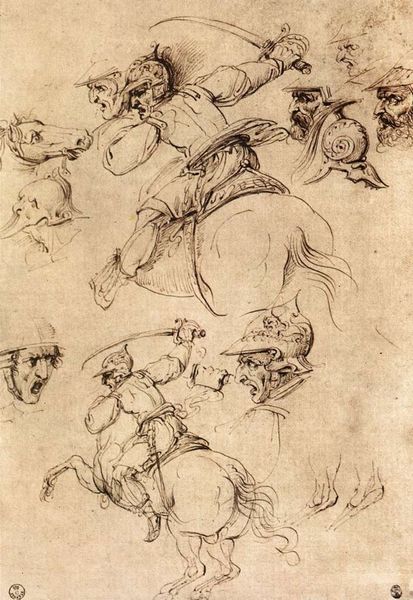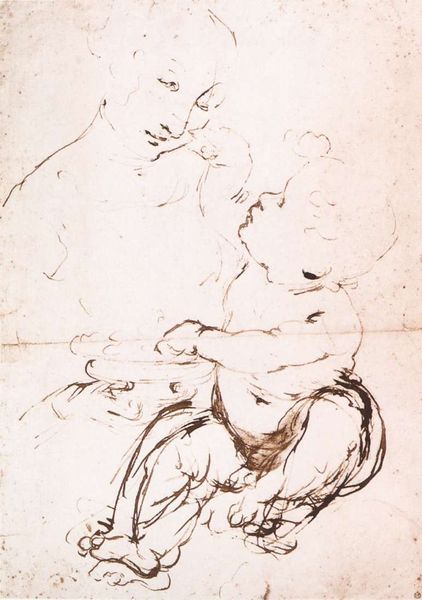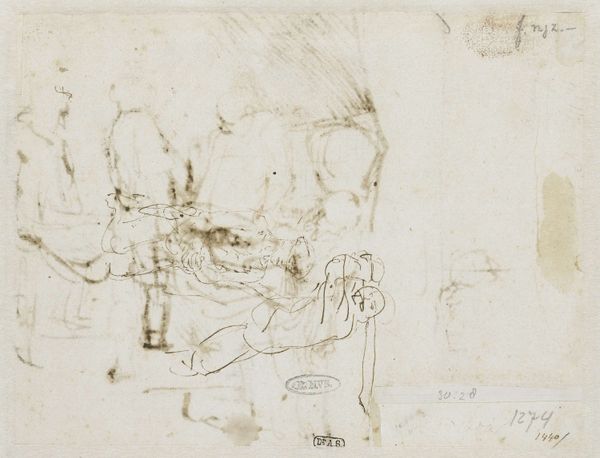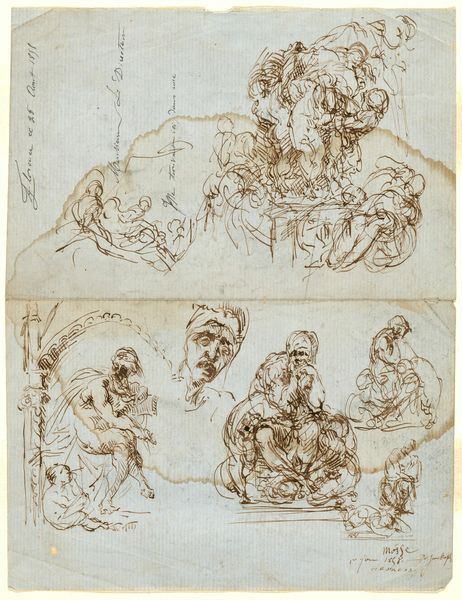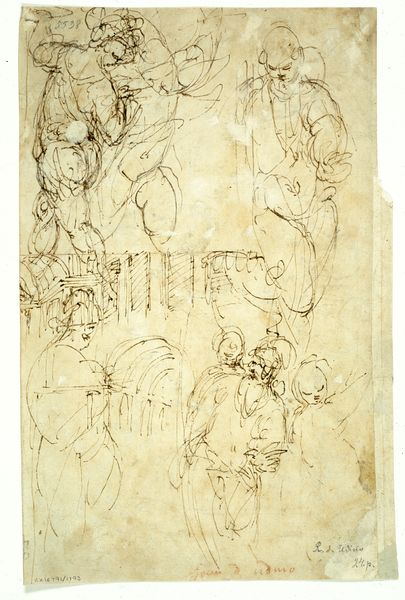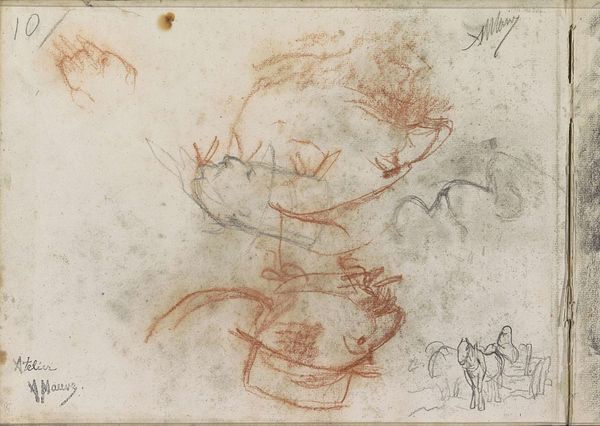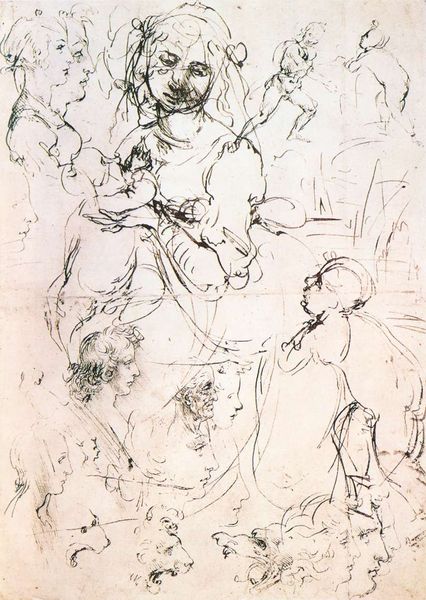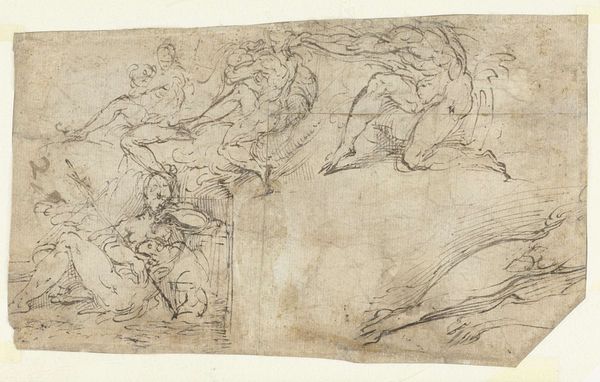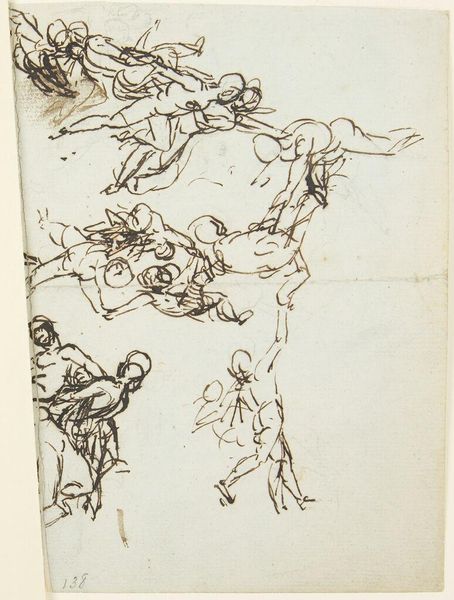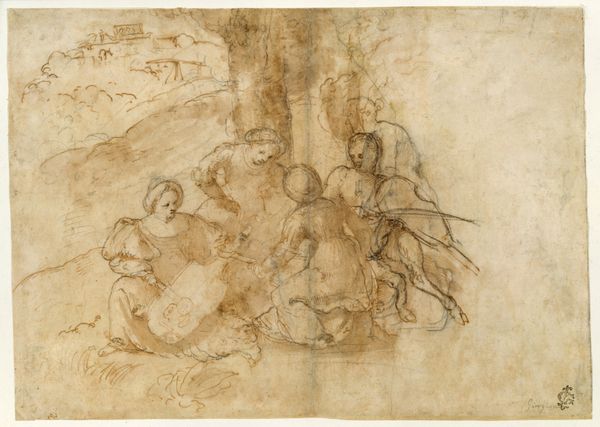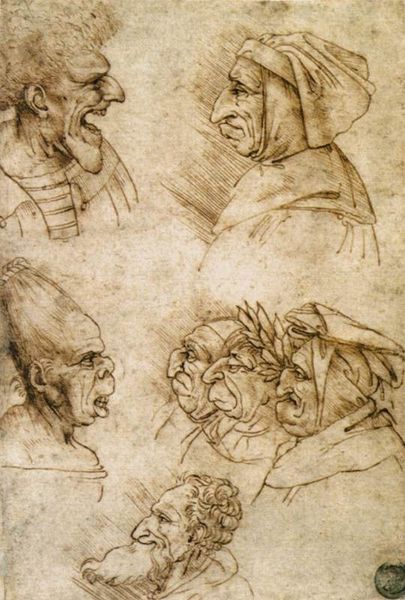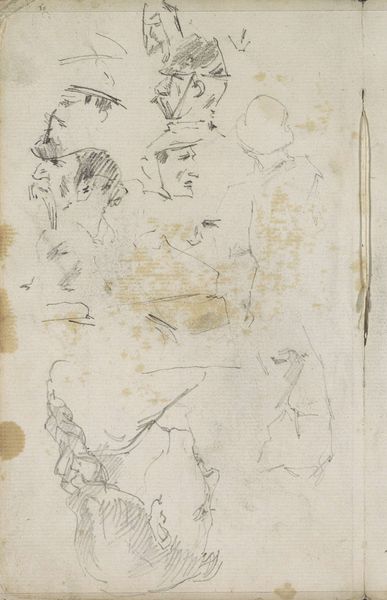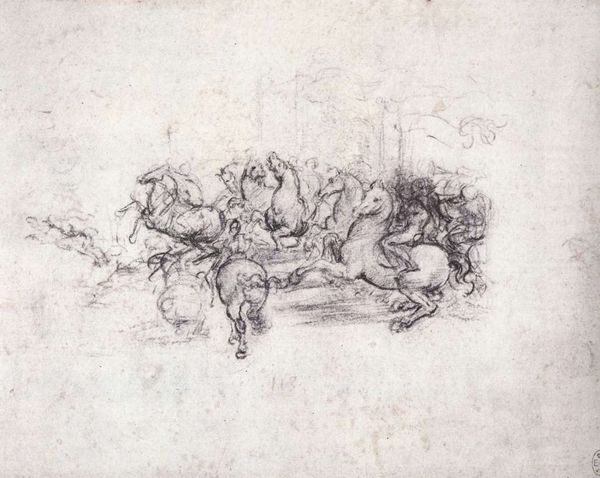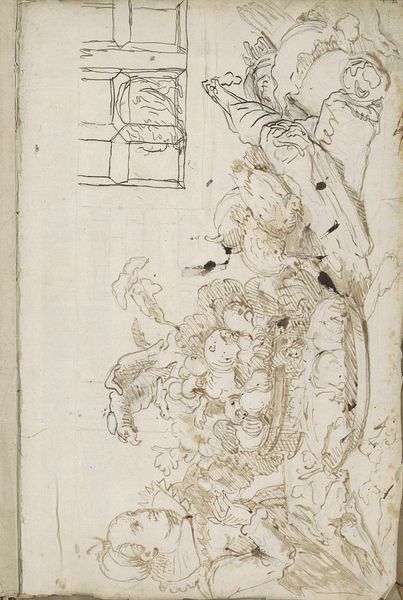
drawing, ink
#
portrait
#
drawing
#
ink painting
#
pencil sketch
#
figuration
#
text
#
11_renaissance
#
ink
#
male-portraits
#
sketch
#
human
#
line
#
early-renaissance
Dimensions: 26.6 x 20.2 cm
Copyright: Public domain
Editor: Here we have Leonardo da Vinci's "Study Sheet," created in 1478. It's an ink drawing. There’s something haunting about these profiles; they feel incredibly raw and intimate. What do you see in this piece, beyond just a study? Curator: What I find fascinating is how this sheet embodies the intersection of art, science, and the very construction of identity during the Renaissance. These aren't just sketches; they are investigations into the human form and, by extension, the human condition. Consider, for example, the prominent rendering of older men and the ways aging bodies were regarded within societal frameworks of knowledge and power during the time. Do you notice how their features seem almost exaggerated, capturing a sense of deep introspection? Editor: I do see that, particularly in the first profile. The lines are so sharp, almost harsh, conveying a sense of wisdom and weariness. What about the presence of written text on the page? How does it all tie into the broader social context of the Renaissance? Curator: The inclusion of text reveals the fusion of art and scientific inquiry in Leonardo’s work, which complicates easy categorizations of gender, social class, or ethnicity that can be considered components of early notions of identity formation. The convergence invites a reassessment of patriarchal structures that dominated access to education and artistic representation, for both the artist and the models in this particular historical moment. Editor: That's a really interesting point; I hadn't considered how his scientific curiosity intersects with social critiques. Curator: Precisely. It pushes us to reconsider whose stories were valued and deemed worthy of representation, even in preliminary sketches, within the power structures of Renaissance society. And even in its unfinished state, it prompts us to reflect on whose stories and perspectives remain marginalized in the narratives of art history today. Editor: This has given me a completely new way of seeing Da Vinci’s work. Curator: And hopefully encourages you to question whose vision of art history is considered valid and inclusive today!
Comments
No comments
Be the first to comment and join the conversation on the ultimate creative platform.
